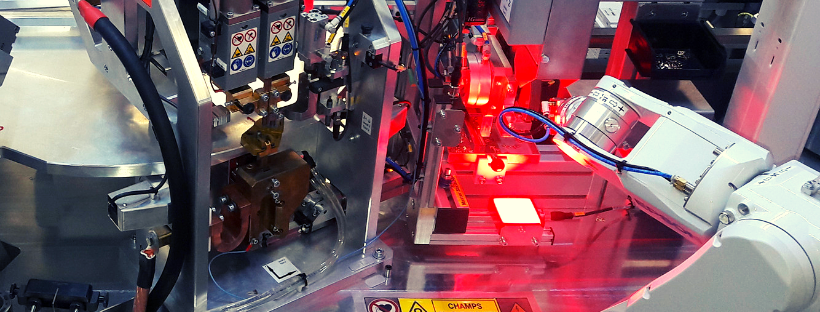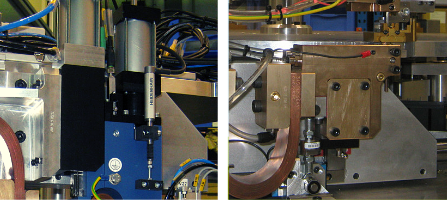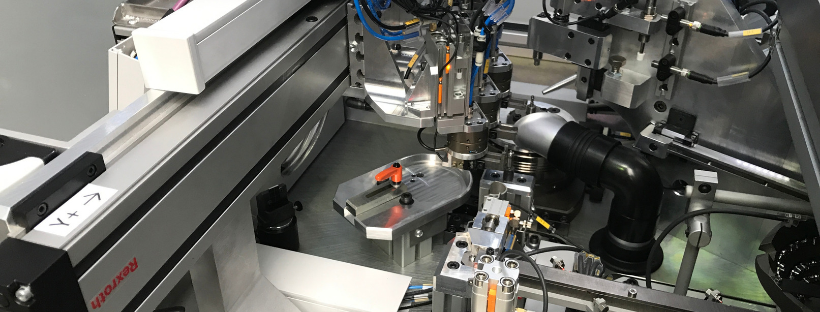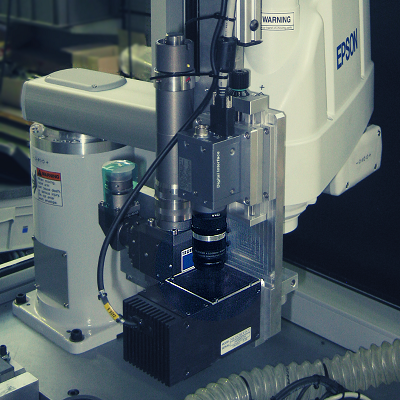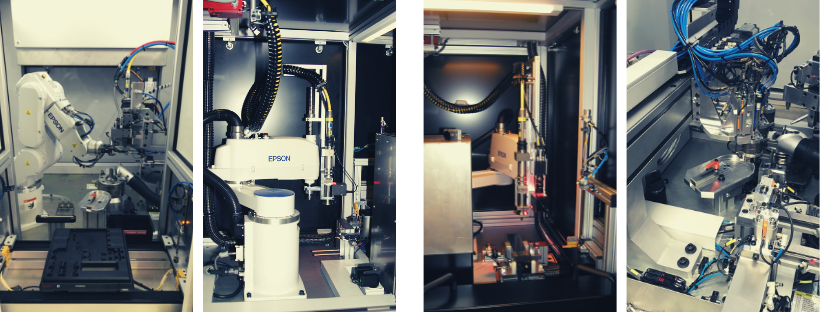Welding
Assemble safely and reliably
Welding is a process that is used for component assembly across a variety of industrial fields. Over the course of its developments, SEMO has integrated welding many times thus acquiring the competence to guide you through your technical choices or product development. SEMO is able to support you in the following welding processes
Resistance welding
No need for welding material
Solid and reliable assembly
Short cycle time
Cleanliness (no slag, etc.)
The principle
Resistance welding is a thermoelectric contact process which does not require the addition of welding material.
The two pieces of metal to assemble are held in contact under controlled mechanical pressure by two electrodes, generally in copper. A controlled high intensity current then crosses this stack. The combination of pressure and high current results in the localized fusion of the two parts to be assembled.
How to control the process?
Combined with the analysis of the welding curve, this measurement enables to determine if the welding meets the specifications.
Laser welding
No need for welding material
Solid and reliable assembly
Very high accuracy
Short cycle time
Cleanliness (no slag, etc.)
Surface or indepth welding
Flexible process
How to control the process?
Vision controls can be performed equally well at the end of the process as well as during the welding process in order to provide feedback the quality of the latter.
The principle
Laser welding does not require the addition of welding material nor electrodes!
Multiple possibilities are thus possible, from surface to indepth welding, on metal components or plastic ones. With this process, there are no more limits to joining spot welding (plusing technology). Continuous wave welding can also be performed by moving either the product or the welding head or even both of them!
The pieces to be assembled are held in position by custom-made toolings. In some cases, overstressing can be applied. The source of heat allowing the pieces to be fused is, in those cases, a laser ray which is highly focused and precisely localized. Depending on the materials to be welded or on the desired appearance, an inert gas can be added to the welding zone in order to prevent oxydation by the atmospheric air.


